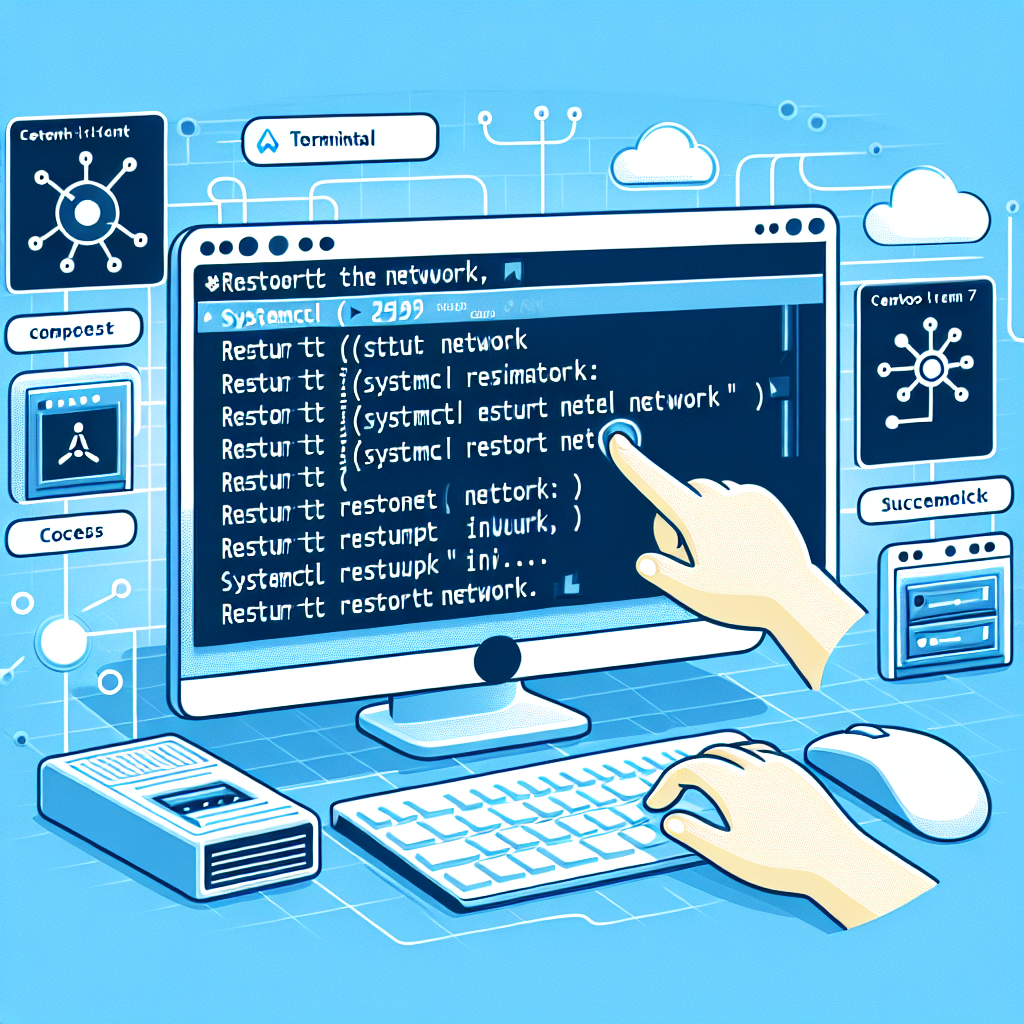Introduction to Network Management in CentOS 7

CentOS 7, a robust server-grade Linux distribution, is widely used for its stability and security features. Managing network settings is a critical task for system administrators to ensure that servers maintain connectivity and operate efficiently. Restarting the network service on CentOS 7 can be necessary for applying new configurations, troubleshooting connectivity issues, or ensuring that changes take effect. This article delves into the various methods and tools available for restarting the network on CentOS 7, providing a comprehensive guide for both novice and experienced users.
Understanding Network Services in CentOS 7
Before we proceed to restart the network, it’s essential to understand the components involved in network management in CentOS 7. The system uses a combination of the NetworkManager service and the traditional network service for managing connections. NetworkManager is a dynamic network control and configuration daemon that aims to simplify the process of configuring networking by automating certain aspects. The traditional network service, on the other hand, is managed through network scripts and is often used for static configurations.
NetworkManager vs. Traditional Network Service
NetworkManager is typically the default management tool on CentOS 7 for desktop installations and is suitable for dynamic network environments where connections may change frequently. It provides a command-line interface (nmcli) and a graphical interface for ease of use.
The traditional network service, managed via the /etc/sysconfig/network-scripts/ directory, is more commonly used on servers where network interfaces do not change often. It is controlled through the ifcfg scripts and the systemctl command.
Preparing to Restart the Network
Before restarting the network on CentOS 7, it’s crucial to ensure that you have administrative privileges and that you’ve backed up any important configuration files. This precautionary step will help you revert changes if anything goes wrong during the process.
Backup Configuration Files
Always backup your network configuration files before making changes. The primary configuration files are located in /etc/sysconfig/network-scripts/ and are named ifcfg-*, where * represents the name of your network interface.
Methods to Restart the Network on CentOS 7
There are several methods to restart the network on CentOS 7, each suitable for different scenarios. We will explore these methods in detail, providing step-by-step instructions.
Using systemctl to Restart Network Services
The systemctl command is used to control the systemd system and service manager. To restart the network using systemctl, follow these steps:
- Open a terminal or connect to your CentOS 7 server via SSH.
- Enter the following command to restart the network service:
sudo systemctl restart network - Verify that the service has restarted successfully:
sudo systemctl status network
This method will apply any changes made to the network configuration files.
Using NetworkManager’s nmcli Tool
For systems using NetworkManager, the nmcli tool can be used to restart the network. Here’s how to do it:
- Open your terminal or SSH session.
- Restart the networking by disabling and then re-enabling the network interface:
nmcli networking off nmcli networking on
This method is particularly useful for desktop systems or servers that use NetworkManager.
Restarting Individual Network Interfaces
Sometimes, you may only need to restart a specific network interface rather than the entire network service. This can be done using the ifdown and ifup commands:
- Bring down the interface:
sudo ifdown eth0 - Bring up the interface:
sudo ifup eth0
Replace eth0 with the actual name of your network interface.
Applying Network Configuration Without Restarting
In some cases, you may want to apply network configuration changes without restarting the network service. This can be done using the nmcli tool or by re-loading the interface configuration.
Using nmcli to Reload Configuration
To reload a connection’s configuration with nmcli, use the following command:
nmcli connection reloadThis will re-read all connection profiles without affecting established connections.
Re-loading Interface Configuration
For traditional network management, you can re-load an interface’s configuration by bringing it down and up again using the ifdown and ifup commands, as shown in the previous section.
Troubleshooting Network Issues After Restart
After restarting the network, you might encounter connectivity issues. Here are some troubleshooting steps you can take:
- Check the status of the network service to ensure it’s active.
- Examine the interface configuration files for any errors or misconfigurations.
- Use the ping command to test connectivity to local and external addresses.
- Review system logs for any network-related error messages.
FAQ Section
How do I check the status of my network interfaces in CentOS 7?
You can check the status of your network interfaces using the ip addr command or by viewing the output of nmcli device status.
What should I do if I lose remote connectivity to my CentOS 7 server after restarting the network?
If you lose remote connectivity, you may need to access the server physically or through a remote console to troubleshoot and restore the network settings.
Can I restart the network service without sudo privileges?
No, restarting the network service requires administrative privileges. You must use sudo or log in as the root user.
Is it safe to restart the network service on a production server?
Restarting the network service will temporarily disrupt connectivity, so it should be done during maintenance windows or when the least disruption is expected.
How can I ensure my network configuration changes are correct before restarting?
You can use tools like nmcli to validate the syntax of NetworkManager profiles or manually review traditional network scripts for errors.
Conclusion
Restarting the network on CentOS 7 is a straightforward process that can be accomplished using various methods, depending on your system’s configuration. Whether you’re using NetworkManager or traditional network scripts, it’s important to understand the implications of restarting the network service and to take appropriate precautions. By following the guidelines provided in this article, you can confidently manage your network settings and maintain a stable and connected CentOS 7 system.
References
For further reading and advanced network management techniques, consider exploring the following resources:

